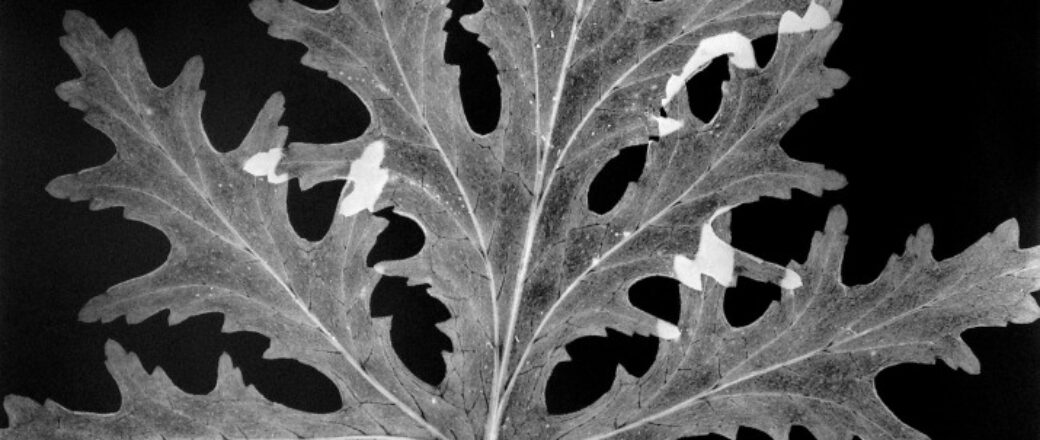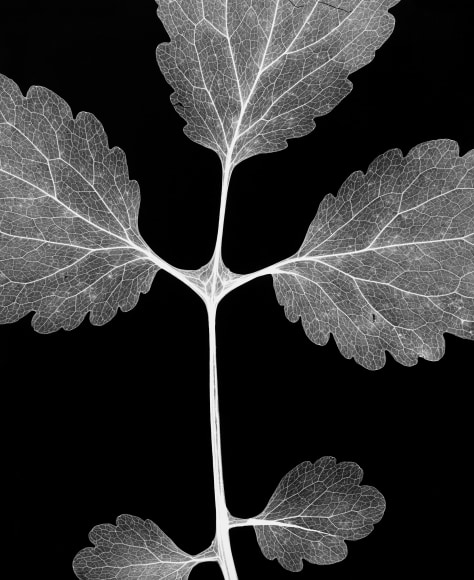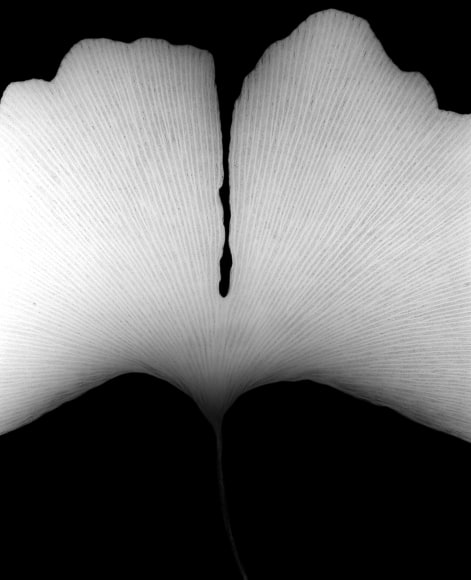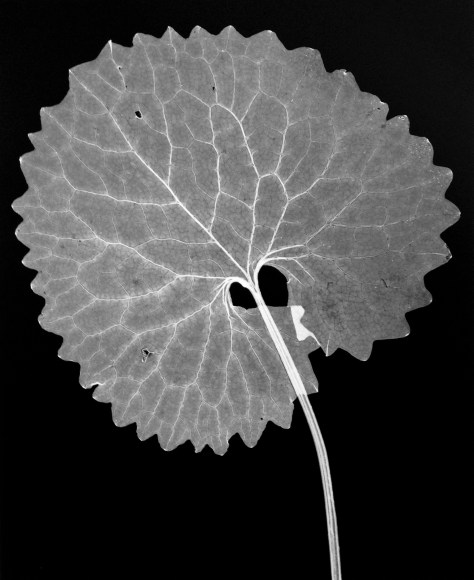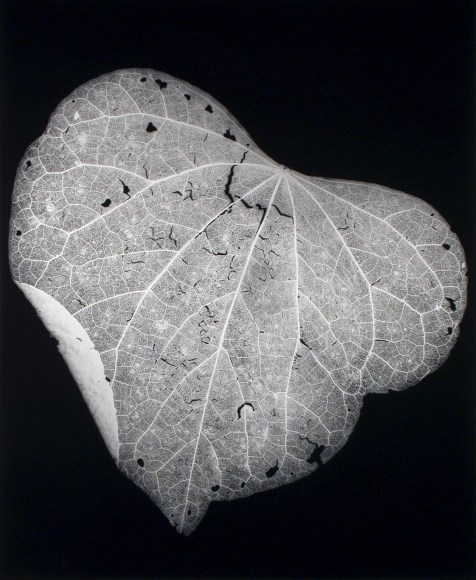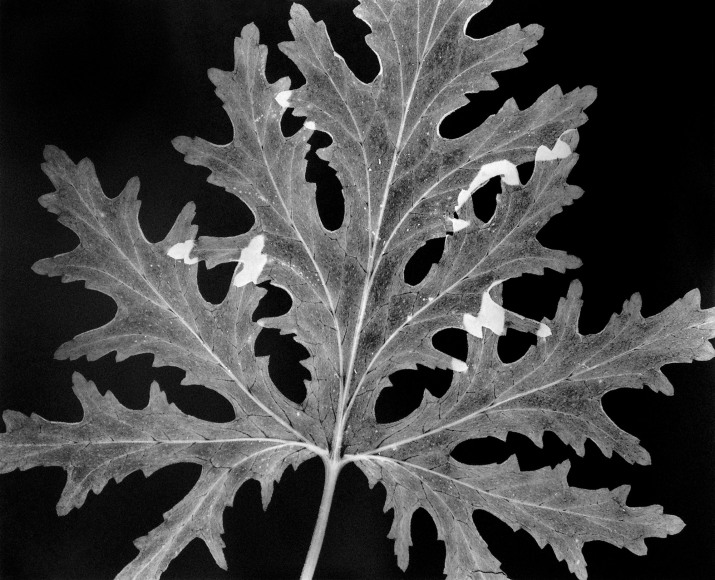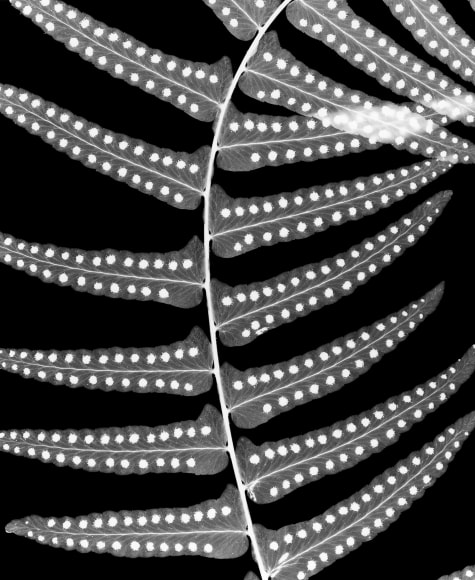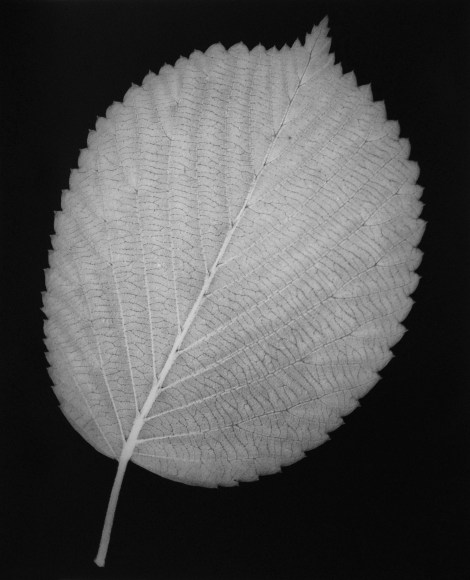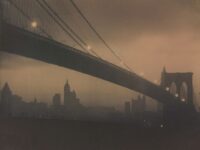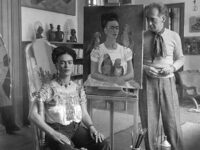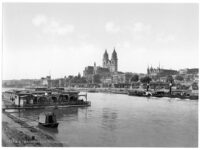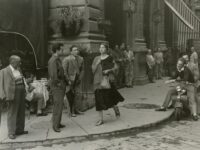Joseph Bellows Gallery is pleased to present an online exhibition of Amanda Means’ series, Leaves. These large-scale black and white camera-less photographs are delicately rendered through the artist’s unique image-making process and beautifully printed by the photographer, who is a master darkroom printer. Amanda Means (American, 1945 – ) received a BA from Cornell University in 1969 and an MFA from SUNY Buffalo (Visual Studies Workshop, Rochester, NY) in 1978. Her work is in the permanent collections of the Whitney Museum of American Art, the San Francisco Museum of Modern Art, The Los Angeles County Museum of Art, the Museum of Fine Arts Boston, MIT List Visual Arts Center, the Albright-Knox Art Gallery, Museum of Fine Arts, Houston among others.
Means does not use either a camera or film to make her photographs. Her instrument is a sizeable enlarger whose lens is pointed toward the adjacent wall, onto which a large sheet of photographic paper is tacked. With wood and a black cloth reminiscent of the shroud needed to focus a view camera in bright light, Means has constructed a large chamber, lined with white paper, between the powerful lamp and the lens. Into that chamber, she places an actual plant, through whose leaves and petals the light passes proportionately to their translucency while reflected light illuminates opaque stems. Since the heat of the lamp quickly wilts the specimens, Means has to work fast and may get only one or two prints before a fragile leaf or flower fades, though the images of death at the end of a session are sometimes the finest of all.
The result is a negative image, in which the parts of the plant or flower that block or absorb the most light appear lightest in the print. In this, they superficially resemble Man Ray’s botanical rayographs, made by layering flowers or plant parts directly onto photographic paper. Ray, however, used flowers more or less interchangeably with bric-a-brac. For Means, the specificity of the plants and flowers is paramount.
Throughout the history of botanical photography, there has usually been a one-to-one relationship between the subject’s size and the resulting image’s size, but many of Means’s photographs of a single flower or plant measure four by five feet. The photographer has written, “I’m trying to make images of plants that are so big and powerful that people have to stop and pay attention to them even though plants are small and silent.”
Because Mean’s photographs remove the distraction of color, which usually eclipses form in our experience of the leaves and flowers, the fantastically intricate natural structures are fully revealed. Psychologists say that in our deepest levels of sleep, we dream in black-and-white; we seem to dream in color only in the last hours before we wake up. The photographs are, to some extent, laments for the extinction of so many plant species, and by confronting us overwhelmingly with greatly enlarged revelations of the miracle of floral architecture, Means warns us of the magnitude of our impending losses.
Means’s work brings photography full circle back to the non-camera work of Anna Atkins, who produced the 389 images for the three volumes of her Photographs of British Algae between 1843 and 1854 to supplement William Harvey’s Manual of British Algae, published in 1841. Atkins is hailed as the first person ever to use photography to make an extended series of scientific images. She placed her specimens on prepared paper and exposed them to sunlight to make negatives, which were then printed (also by sunlight) on cyanotype paper, used today to make blueprints. Her exquisitely delicate and detailed studies of sinuous algae floating on their blue backgrounds are the fruit of a happy collaboration between the artist and what William Henry Fox Talbot, the inventor of paper negatives, called “The Pencil of Nature,” referring to the way in which images had been, as it were, sketched by the Sun. Means rightly said of her work, “This is a different kind of light than the reflected light used by cameras containing film. The light in my photographs seems to emanate from the image itself, in much the same way as the light which comes from within the accumulations of paint in a painting.” Means’s work brings to mind one of Ralph Waldo Emerson’s most glorious formulations. Emerson wrote that we should attempt to dwell “in the most earnest experience of the common day by reason of the present moment and the mere trifle of having become porous to thought, and bibulous of the sea of light.”
From Amanda Means Flower Light by Richard Whelan
Joseph Bellows Gallery
7661 Girard Avenue
La Jolla, CA 92037
Tel (858) 456-5620
josephbellows.com

